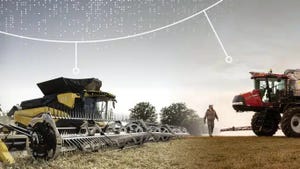Cloud, AI and automation for telco: the art of the possible
Telecoms.com periodically invites expert third parties to share their views on the industry’s most pressing issues. In this piece Honoré LaBourdette, acting SVP, Global Telco, and VP, Telco Partner Ecosystem at Red Hat, explores how best telcos can make use of some emerging technologies.
April 10, 2024

Telecommunications companies today face the challenge of operating their networks more efficiently and monetizing them more effectively. The key to success is designing and building an intelligent, autonomous infrastructure. This includes the use of automation, AI and the favorable economics of a hybrid cloud model.
Like many industries, telecommunications is undergoing a rethink when it comes to using the cloud. There are very few companies that are still following the original plan of moving everything to the public cloud. Different workloads require the use of different operating environments to meet compliance, security and economic needs, so hybrid scenarios have shown to be the best way to get there.
Many service providers are having the same discussion today. After a period of rapid cloud migration, they have gained a more nuanced understanding of the economics of their operations. This awareness, combined with changing regulatory requirements and business strategies, is leading to a frequent reassessment of which workloads should be moved to which cloud. The focus is on hybrid cloud strategies that provide the necessary flexibility to adapt to changing requirements and financial, operational and business objectives.
One way of reducing complexity of a hybrid environment is to use a horizontal and unified platform that provides a consistent set of operational tools and security capabilities across multiple clouds. Organizations gain central control using automation for scaling and moving workloads from the core to the edge to the public cloud and back. They are looking for maximum flexibility and independence when choosing current or future cloud options.
Integrated automation
To best integrate clouds with a scalable platform, two things are essential: end-to-end automation and AI.
Automation helps in several ways. Today’s automation provides data points from many devices and endpoints in the network and across IT. This data is analyzed by AI applications that then return recommendations for automation tools to make proactive as well as reactive changes.
As well as providing better intelligence on what you automate, AI can also speed up the process of writing software commands to execute automation.
The provisioning of connectivity services is already automated at many service providers, but tying in automation at the application layer remains an open opportunity. Just as with hybrid cloud, service providers need to take a holistic approach to automation, across the network and infrastructure as well as at the business application level. It's about applying automation on a broader scale in a consistent, repeatable way, whether provisioning infrastructure, developing a service, or extracting data from a system. Organization-wide automation can be centralized on a consistent platform to avoid siloed islands of automation and improve overall usability and productivity.
Applying AIOps to infrastructure
To date, service providers' use of AI tends to be in areas such as customer service with chatbots, compliance checks, or malware detection. The use of AI in infrastructure optimization is still in its infancy. However, it is set to play an increasingly important role with the development of generative AI and large language models (LLMs). The concept of retrieval augmented generation (RAG) will be particularly important. RAG provides LLMs with additional information from external knowledge sources, such as current real-time data, contextual, proprietary, or domain-specific information. This enables the creation of a closed loop system that can automatically drive decisions into the infrastructure so it can be adjusted dynamically as needed.
This can apply to traffic monitoring, load management, tuning, network lifecycle management and power management. With the latter for example, workloads can be compacted into smaller units to use less energy in the datacenter, resulting in lower cost. Until now this required accessing each system separately and running schedulers, so this shift is transformative. In the radio access network (RAN), AI models can be used for more dynamic control of frequencies, sectors, cells and base stations. AI can also simplify and streamline operations by enabling real-time root cause analysis to reduce the time it takes to fix problems, or with predictive analytics to prevent issues before they even happen, providing an overall better service experience.
Making Sense of Hybrid Cloud
The rise of AI is, in turn, the rise of the cloud. Organizations are increasingly realizing that they need on-premises, edge and cloud resources to get the most out of their AI projects and so are working on strategic integration of hybrid cloud solutions into AI initiatives. This is driven by the need to combine data security and sovereignty with the computing power required for powerful AI models, while keeping the cost of training models and model inference under control. In a sense, cloud services and AI have a symbiotic relationship, with the former serving as the backbone for the continued development and widespread adoption of AI. This integration is critical to unlocking new business opportunities such as enterprise edge applications, and transforming traditional working practices.
Ultimately, a radical reimagining of networks is what will help service providers to set up innovation and stay competitive and future-ready. It is within reach to create a fully automated infrastructure that uses zero-touch deployment and operations, has intelligent control of compute, storage and network and is capable of self-configuring, self-healing, self-optimizing and self-evolving. But it can’t be done by creating snowflakes that operate differently, or by making decisions in silos. In order to benefit from connecting everything from core to edge to cloud, we strongly believe the industry needs a common operational model, automation technique and cloud platform. Above all, we need an open and collaborative ecosystem approach to building, testing and innovating to bring all these pieces together.

Honoré LaBourdette is acting senior vice president of Global Telco and vice president of Telco Partner Ecosystem at Red Hat. At Red Hat, she has global responsibility for enabling service providers, ecosystem partners and enterprise 5G networks to rapidly deploy cloud-native applications at scale using Red Hat’s open hybrid cloud technologies.
Honoré is a seasoned technology executive having held senior positions in sales, business development, marketing, strategy and operations in both software and hardware companies including Cisco/NetSolve, Nortel, N.E.T. and AT&T with a particular focus on transformational vertical industries and initiatives. Most recently prior to Red Hat, Honoré was vice president, Global Market & Business Development for VMware’s Telco and Edge Cloud Business unit.
Read more about:
DiscussionAbout the Author(s)
You May Also Like









.png?width=300&auto=webp&quality=80&disable=upscale)

_1.jpg?width=300&auto=webp&quality=80&disable=upscale)


.png?width=800&auto=webp&quality=80&disable=upscale)